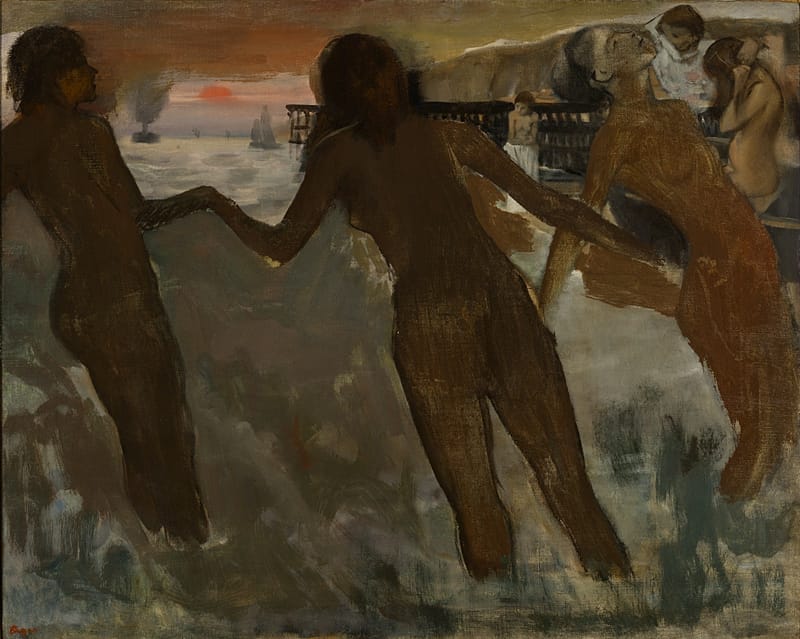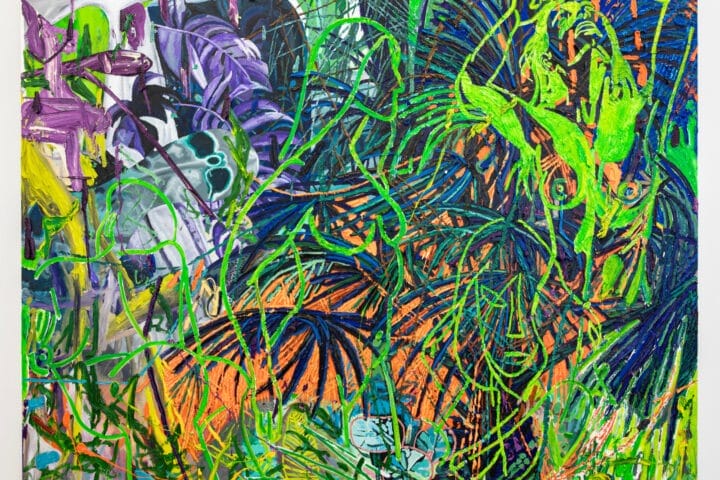In an extraordinary unveiling at The National Gallery, the much-anticipated “Discover” series presents its third exhibition, “Discover Degas & Miss La La,” opening June 2024. This free exhibition centers on one of the Impressionist movement’s landmark pieces, “Miss La La at the Cirque Fernando” by Edgar Degas, painted in 1879. The show promises unparalleled insights into both the artist’s method and the fascinating life of the circus performer known as Miss La La.
Miss La La, born Anna Albertine Olga Brown in 1858, stood out as an iconic figure of strength and grace in the late 19th century, achieving fame across Europe for her daring aerial acts. One such performance, where she ascended to the Cirque Fernando’s ceiling with a rope clenched between her teeth, captivated Degas and inspired one of his most original works. The painting, celebrated for its daring modernism, was first showcased at the 4th Impressionist Exhibition in Paris in April 1879.

Peasant Girls bathing in the Sea at Dusk, about 1875-6
Oil on canvas
65 x 81 cm
Private collection (L1280)
© Photo courtesy of the owner
The upcoming exhibition at The National Gallery will display not only “Miss La La at the Cirque Fernando” but also a remarkable collection of preparatory drawings by Degas, including some that have been unpublished or unseen for over a century. These pieces reveal Degas’s meticulous process and deep interest in his subject. Furthermore, the show will introduce new discoveries about Miss La La’s life and career, enhanced by the presentation of never-before-seen photographs, shedding light on her success as an aerialist and her life beyond the circus.
This exhibition extends beyond the canvas to explore broader themes of racial identity and representation in the art world. Born to a European mother and an African-American father, Olga’s story intersects with changing perceptions of race and identity in the arts. By highlighting her achievements and restoring her full name, the gallery aims to address the historical anonymity faced by non-white performers and models. Recent research into Black models and their significant impact on art enriches this narrative, promising a comprehensive view of both Degas’s muse and his approach to depicting individuals of color.
“Discover Degas & Miss La La” also examines the painting’s influence on British art in the 1920s, showcasing works by artists like Thérèse Lessore and Duncan Grant, who drew inspiration from Degas’s portrayal of Miss La La. This section illuminates the lasting legacy of the painting, acquired by the nation in 1925 through the Courtauld Fund, and its role in inspiring post-First World War British artists.
Anne Robbins, the lead curator of the exhibition, expressed her excitement about the revelations the show offers. “Working on this exhibition has been an incredible adventure,” Robbins shared. “We’ve unearthed so many new discoveries—about Miss La La herself, about Degas’s working process, and about his nuanced approach to race and representation.”
As part of The National Gallery’s ongoing commitment to uncovering and sharing lesser-known stories behind its masterpieces, “Discover Degas & Miss La La” invites viewers to engage with a critical and inspiring chapter of art history not previously explored. This exhibition is the latest in the “Discover” series, which aims to cast new light on underappreciated works and their creators, offering fresh perspectives on well-loved classics.
For anyone interested in the intersection of art, history, and societal progress, “Discover Degas & Miss La La” is an essential stop. From groundbreaking research to the celebration of Miss La La’s life and contributions, the exhibition promises to foster a deeper understanding and appreciation of Degas’s work and his extraordinary muse.










